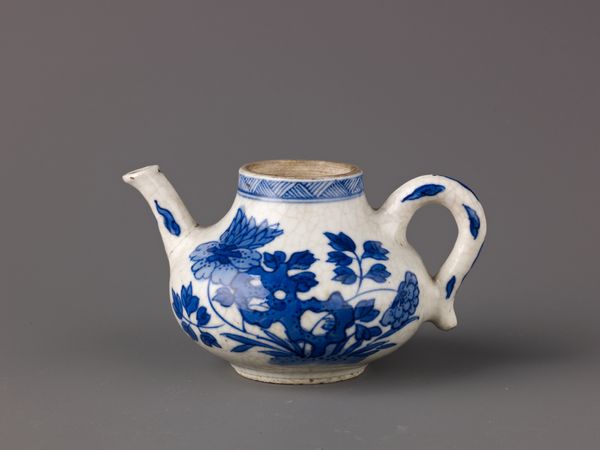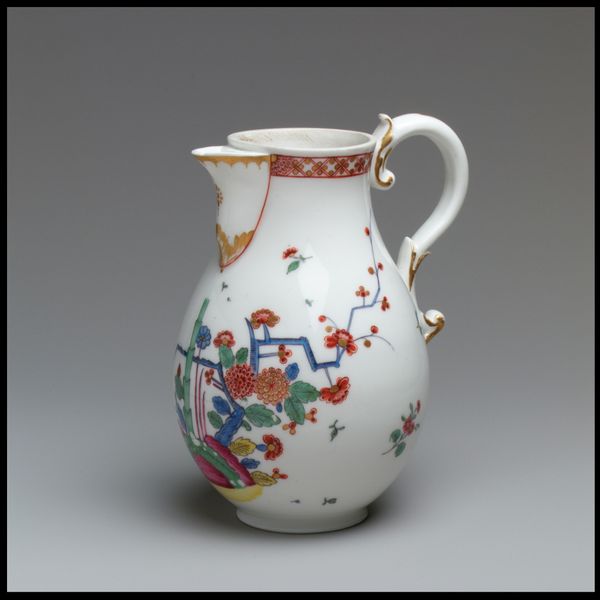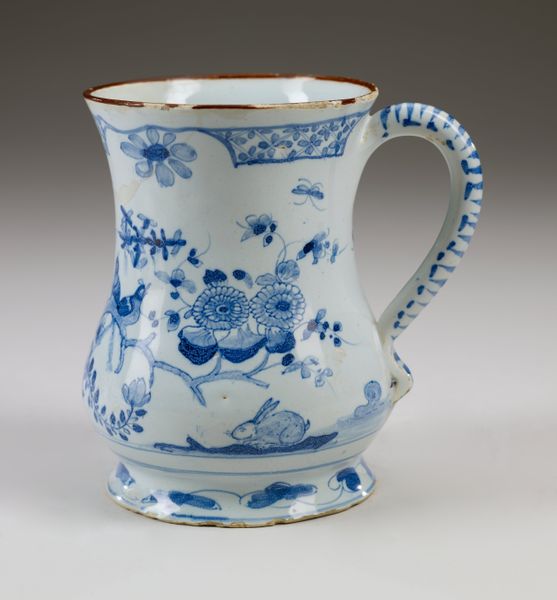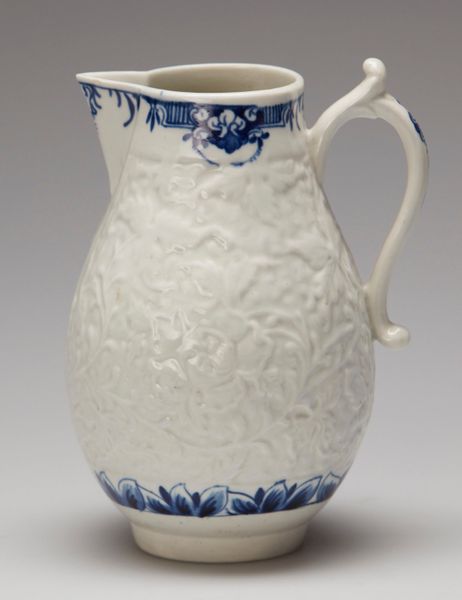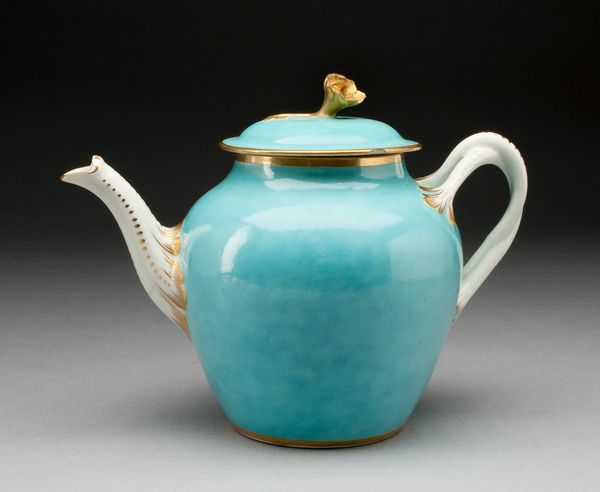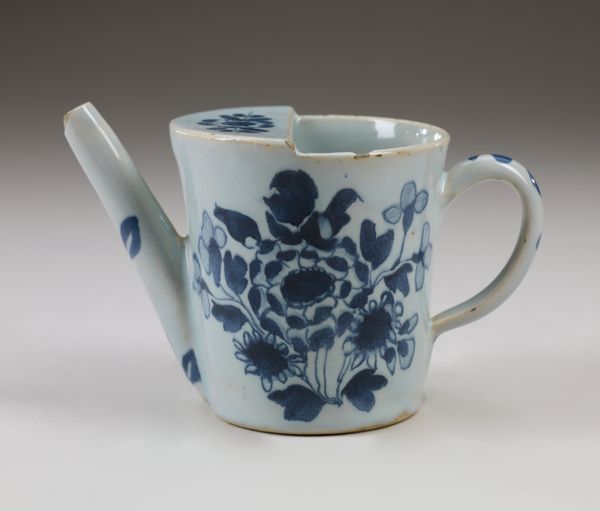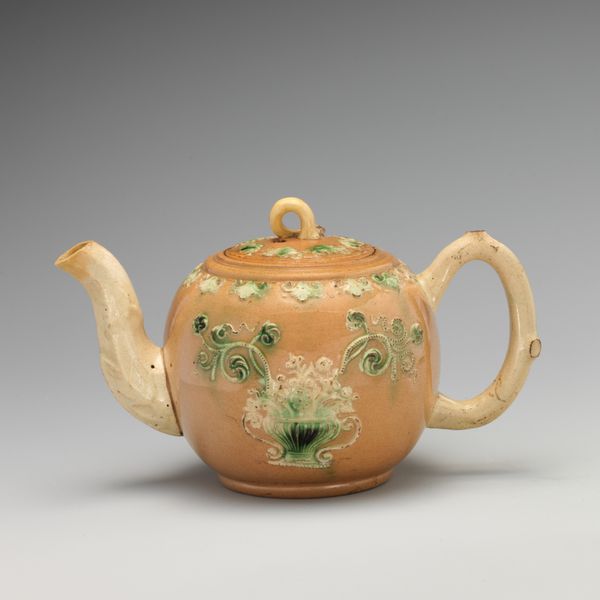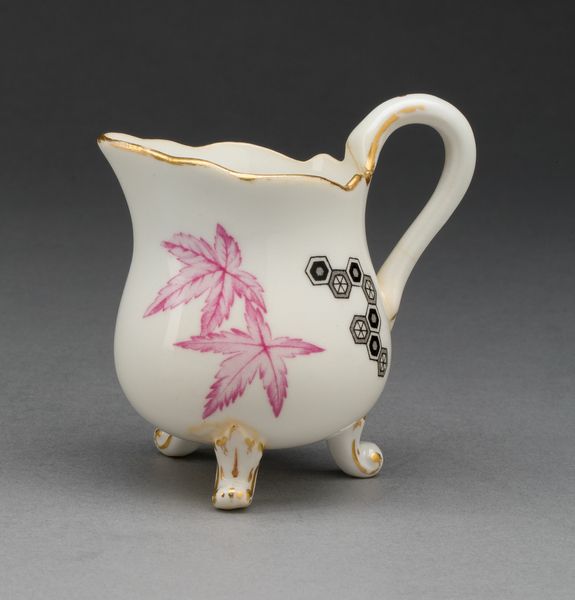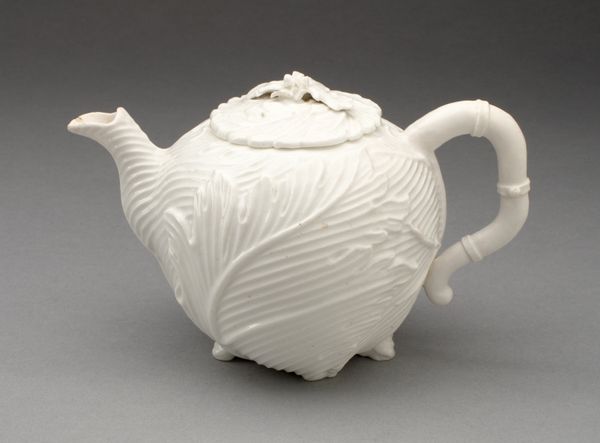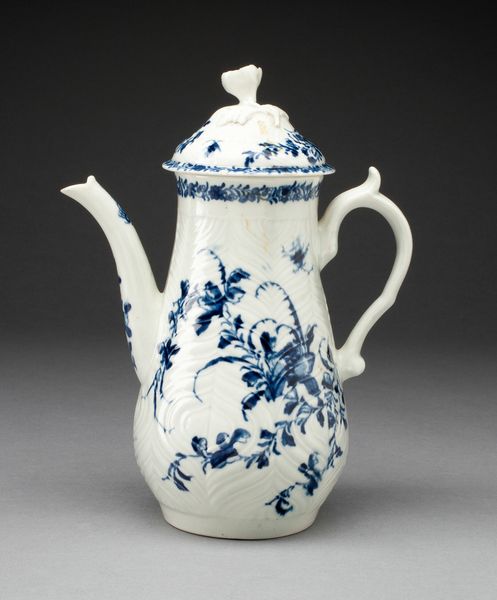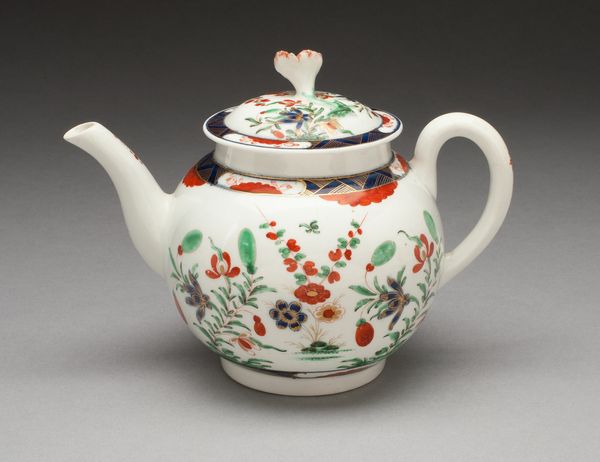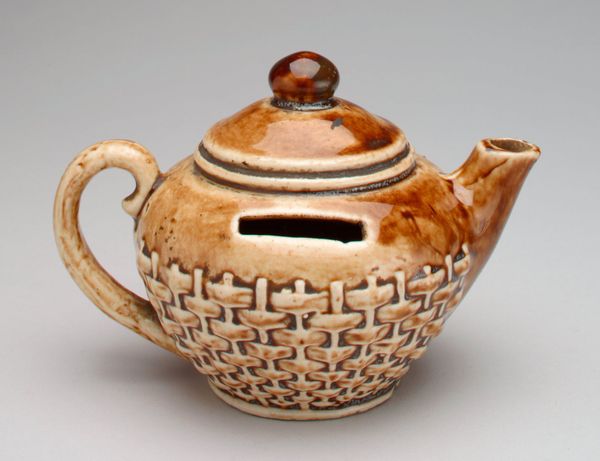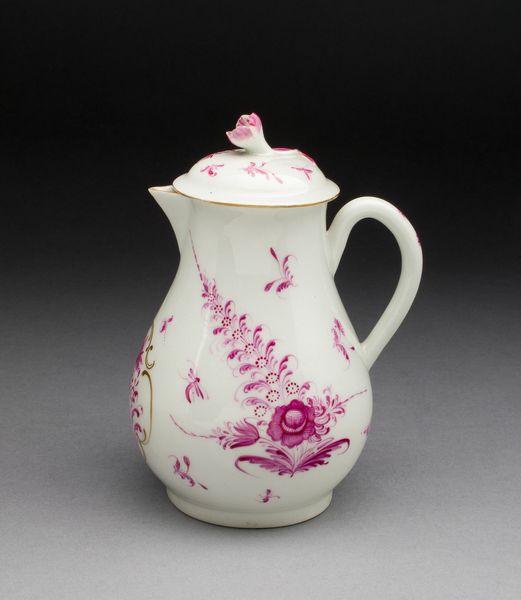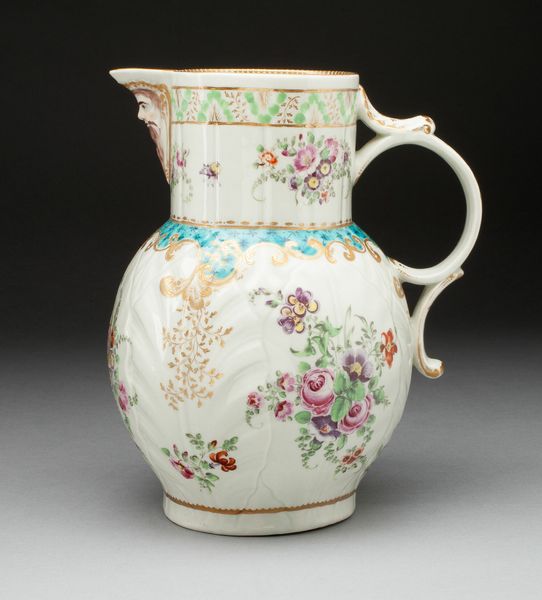
ceramic, earthenware
#
ceramic
#
earthenware
#
stoneware
#
wash background
#
ceramic
#
islamic-art
#
decorative-art
Dimensions: 7 3/8 x 8 5/8 x 6 1/4 in. (18.73 x 21.91 x 15.88 cm)
Copyright: Public Domain
Curator: Here we have a piece identified as an "Ewer with floral design" made of earthenware, and dating back to the 12th or 13th century. It is currently held in the collection of the Minneapolis Institute of Art. Editor: My initial reaction is one of understated elegance. The soft celadon glaze paired with the dark floral motifs creates a really delicate visual balance. The vessel's form feels quite traditional, almost timeless. Curator: It is. This type of ewer speaks volumes about the societal function of ceramics within Islamic art during this period. Its presence indicates sophisticated trade networks that enabled the movement of raw materials, techniques, and, most importantly, artistic concepts. These objects were more than utilitarian items; they held a social cachet and facilitated community rituals and hospitality. Editor: Indeed. Focusing solely on form, consider the swelling body of the ewer juxtaposed with the slender, almost bird-like spout and the arching handle. These contrasting lines offer an active visual pathway for the viewer's eye. The applied decoration seems almost purposefully subdued in register, as though intent on enhancing the object's physical form rather than overshadowing it. Curator: The floral designs weren't simply aesthetic flourishes, mind you. These botanical elements might be deeply symbolic. We must consider the courtly cultures where the use of floral decoration—its availability and application to these works—served to bolster and promote status and elite identity. Editor: Absolutely. Looking again at the composition, the horizontal band of curved strokes just below the neck creates this energetic rhythm. Do you think this piece carries the same symbolic value in the absence of the full cultural context in the present day? Curator: That's a complex question, as meanings change. Though direct access to 12th-century perspectives eludes us, appreciating the artistic ambition invested in these kinds of pieces remains relevant. We are invited to look again at cross-cultural movements, innovations in the application of ceramics and the social life of such designs. Editor: I suppose that after our conversation, it now seems the form is perhaps less modest than I initially perceived! Curator: Exactly, its story resonates far beyond the material itself.
Comments
minneapolisinstituteofart about 2 years ago
⋮
Korean potters produced celadons with underglaze iron-brown designs as early as the eleventh century. The majority of these pieces seem to have been created at local kilns which were not capable of producing the reduction (oxygen-free) atmosphere necessary to achieve celadon blue-green hues. Nevertheless, the elegant shapes and vigorous designs of Koryo iron painted wares are greatly admired.
Join the conversation
Join millions of artists and users on Artera today and experience the ultimate creative platform.
